Research on a 3D Geological Disaster Monitoring Platform Based on REST Service
Abstract
1. Introduction
2. Three-Dimensional GIS Platform Construction
2.1. Basic Platform Architecture
2.2. Data Organization Management
2.2.1. Vector Data Organization
2.2.2. Terrain Data Organization
2.2.3. Image Data Organization
2.3. Three-Dimensional GIS Platform Application Model
3. Monitoring and Warning Design
3.1. Remote Monitoring
3.2. Warning Model Design
4. Rest Construction and Integration
4.1. REST Application Overview
4.1.1. REST Features
4.1.2. Application Mode
4.2. REST Service Integration
4.2.1. Geographic Information Integration
4.2.2. Monitoring Data Integration
4.2.3. Warning Model Service Integration
5. Platform Application
- (1)
- The platform can load Building Information Modeling (BIM) to realize 3D visualization and information management of surface building, and match the terrain data to assist in the assessment of emergency rescue and disaster damage.
- (2)
- Based on the local calculation ability, the platform can add drilling data to construct a 3D geological body model, which will have more intuitive and more accurate expression than traditional planar exploration maps and can be further extended to construct a 3D model of underground space and assist in engineering analysis and decision making.
- (3)
- The platform can add the function of remote sensing image interpretation, divide the danger zones, and realize regional risk assessment based on rainfall forecast data. In this way, the point and plane warning of disaster monitoring can be combined to enhance the practicability of the warning.
6. Conclusions
Author Contributions
Funding
Conflicts of Interest
References
- Zhang, C.S.; Zhang, Y.C.; Hu, J.J.; Gao, Q.Z. Spatial and temporal distribution characteristics and forming conditions of Chinese geological disasters. Quat. Sci. 2000, 20, 559–566. (In Chinese) [Google Scholar]
- Yin, Y. Initial study on the hazard-relief strategy of geological hazard in China. Chin. J. Geol. Hazard Control 2004, 15, 1–8. (In Chinese) [Google Scholar]
- Yue, J.; Wang, B.; Liu, G.; Cai, H.C.; Zhou, Y.C.; Yu, G.W. Application study on early warning/forecast and information management system of geological disaster. J. Nat. Disasters 2008, 17, 60–63. (In Chinese) [Google Scholar]
- Dong, Y.; Zhang, S. Geological Disaster Monitoring and Early-warning Information Management System in Three Gorges Reservoir Area. Saf. Environ. Eng. 2008, 15, 6–9. (In Chinese) [Google Scholar]
- Wang, S.; Tang, C.; He, J.; Zhang, W.; Fang, Q.; Cheng, X. Use of unmanned aerial vehicle for precise investigation of geological hazard in strong seismic zone. J. Eng. Geol. 2016, 24, 713–719. (In Chinese) [Google Scholar]
- Zerger, A.; Smith, D.I. Impediments to using GIS for real-time disaster decision support. Comput. Environ. Urban Syst. 2003, 27, 123–141. [Google Scholar] [CrossRef]
- Zhu, S.Y.; Wang, B.J.; Shi, B.; Sun, Y. GIS based stability calculation and zoning of Majiagou landslide. J. Eng. Geol. 2014, 22, 1187–1193. (In Chinese) [Google Scholar]
- Huang, J.; Huang, R.; Ju, N.; Xu, Q.; He, C. 3D WebGIS-based platform for debris flow early warning: A case study. Eng. Geol. 2015, 197, 57–66. [Google Scholar] [CrossRef]
- Jiang, R.G.; Xie, J.C.; Li, J.-X. Research and application of 3D Early Warning Monitoring Platform for flood prevention. J. Hydraul. Eng. 2012, 134, 280–287. [Google Scholar]
- Jia, J.K.; MA, H.; Cai, X.W.; Chen, B.Q.; Shen, S.H. Geohazard Monitoring and Management System Based on IoT and 3D GIS. J. Yangtze River Sci. Res. Inst. 2016, 33, 142–144. [Google Scholar]
- Olyazadeh, R.; Aye, Z.C.; Jaboyedoff, M.; Derron, M.H. Prototype of an open-source web-GIS platform for rapid disaster impact assessment. Spat. Inf. Res. 2016, 24, 203–210. [Google Scholar] [CrossRef]
- Pautasso, C. RESTful Web service composition with BPEL for REST. Data Knowl. Eng. 2009, 68, 851–866. [Google Scholar] [CrossRef]
- Li, J.; Wu, Q. A Client Mashup Method for REST Geographic Service. J. Guizhou Univ. Nat. Sci. 2016, 33, 80–84. (In Chinese) [Google Scholar]
- Muracevic, D.; Kurtagic, H. Geospatial SOA using RESTful web services. In Proceedings of the ITI 2009 31st International Conference on Information Technology Interfaces, Dubrovnik, Croatia, 22–25 June 2009. [Google Scholar]
- Tang, R.; Bai, Y.; Wang, T. Research and Application of Risk Assessment in Urban Lifeline Systems Based on GIS and REST. In Proceedings of the 2010 Second World Congress on Software Engineering (WCSE), Wuhan, China, 19–20 December 2011; pp. 248–251. [Google Scholar]
- Li, J.G.; Tang, X.M.; Wang, H.B. Research and implementation of WebGIS Based on REST architecture. Sci. Surv. Mapp. 2011, 36, 85–87. (In Chinese) [Google Scholar]
- Yang, B.; Shi, W.; Li, Q. An integrated TIN and Grid method for constructing multi-resolution digital terrain models. Int. J. Geogr. Inf. Sci. 2005, 19, 1019–1038. [Google Scholar] [CrossRef]
- Axelsson, P. DEM Generation from Laser Scanner Data Using Adaptive TIN Models. Int. Arch. Photogramm. Remote Sens. 2000, 33, 110–117. [Google Scholar]
- Abdalla, R.; Tao, V. Applications of 3D Web-Based GIS in Earthquake Disaster Modeling and Visualization. J. Environ. Inform. 2004, 2, 814–817. [Google Scholar]
- Roy, D.C.; Coors, V. 3D Web-based GIS for Flood Visualization and Emergency Response. In Proceedings of the 73rd EAGE Conference and Exhibition Incorporating SPE EUROPEC 2011, Wien, Austria, 23 May 2011. [Google Scholar]
- Manchao, H.E. Real-time remote monitoring and forecasting system for geological disasters of landslides and its engineering application. Chin. J. Rock Mech. Eng. 2009, 28, 1081–1090. [Google Scholar]
- Zhang, Z.; Wang, S.; Wang, L. Principles of Engineering Geology Analysis; Geological Publishing House: Beijing, China, 1994. (In Chinese) [Google Scholar]
- Lin, X.; Guo, Y. A study on coupling relation between landslide and rainfall. J. Catastrophol. 2001, 16, 87–92. (In Chinese) [Google Scholar]
- Gaoshe, H.; Yuming, M.; Yuhai, L.; Shangqing, W. Study on prediction criterion of Xintan landslide. Chin. J. Geol. Hazard Control 1996, 7, 67–72. (In Chinese) [Google Scholar]
- Wu, F.; Wang, S. Application of Kalman filter method to Realtime deformation prediction on Lianziya dangerous rockbody. Chin. J. Geol. Hazard Control 1996, 7, 56–60. (In Chinese) [Google Scholar]
- Trilles, S.; Belmonte, O.; Díaz, L.; Huerta, J. Mobile Access to Sensor Networks by Using GIS Standards and RESTful Services. Sens. J. IEEE 2014, 14, 4143–4153. [Google Scholar] [CrossRef]
- Gou, L.; Zhu, M.; Li, Y. Study on web map tile service based on RESTful. Comput. Eng. Des. 2012, 33, 3609–3616. (In Chinese) [Google Scholar]
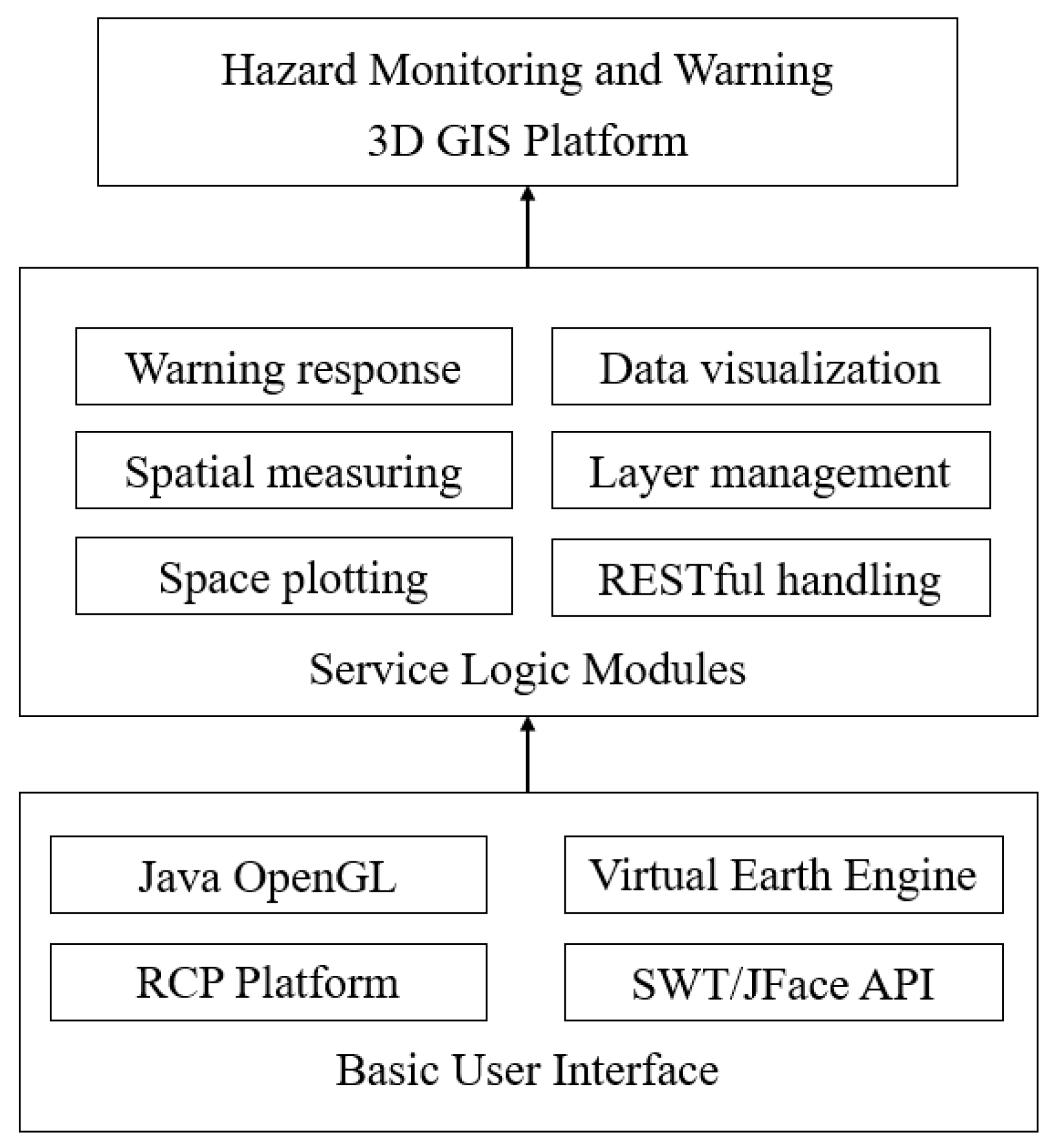
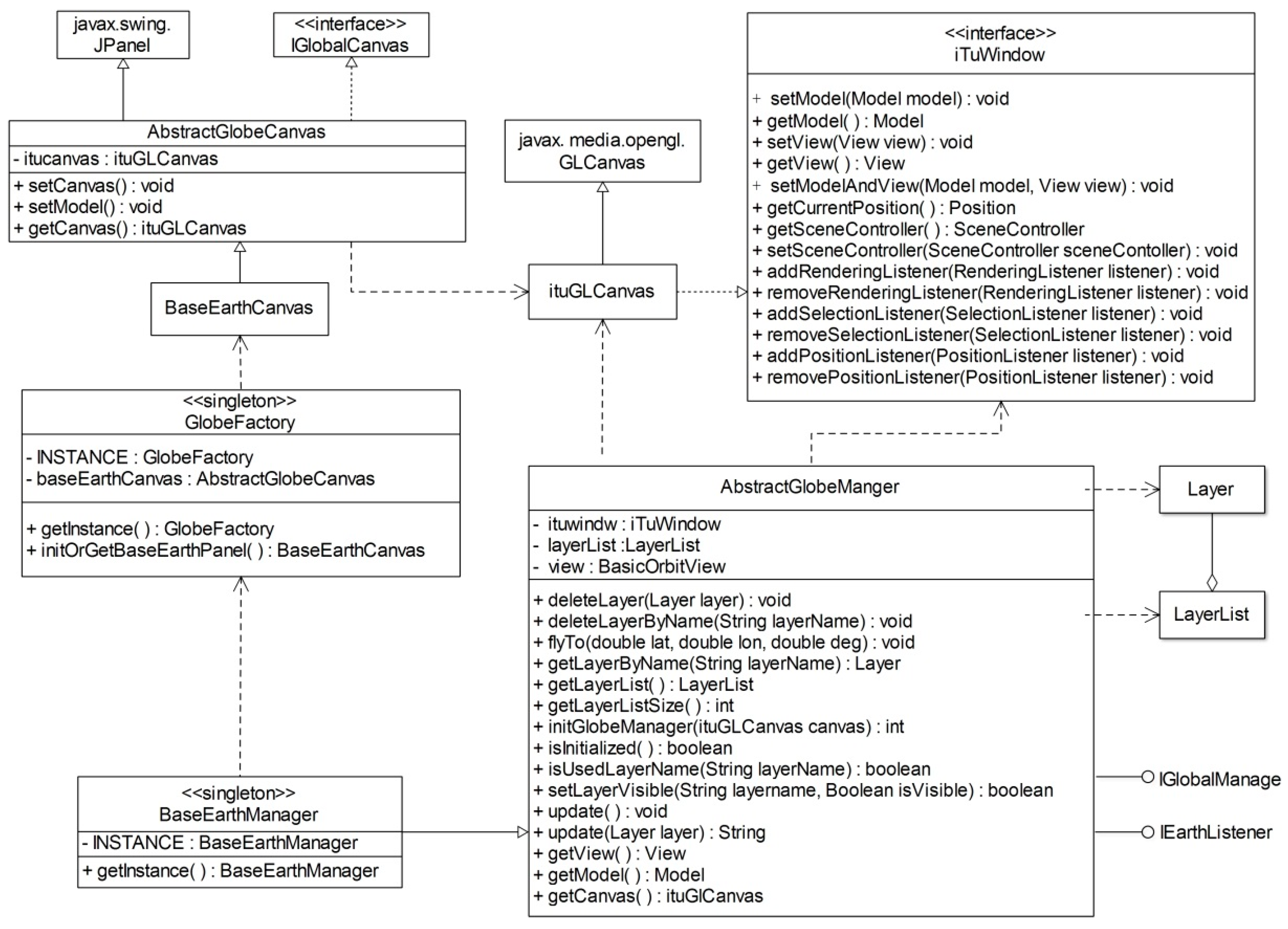
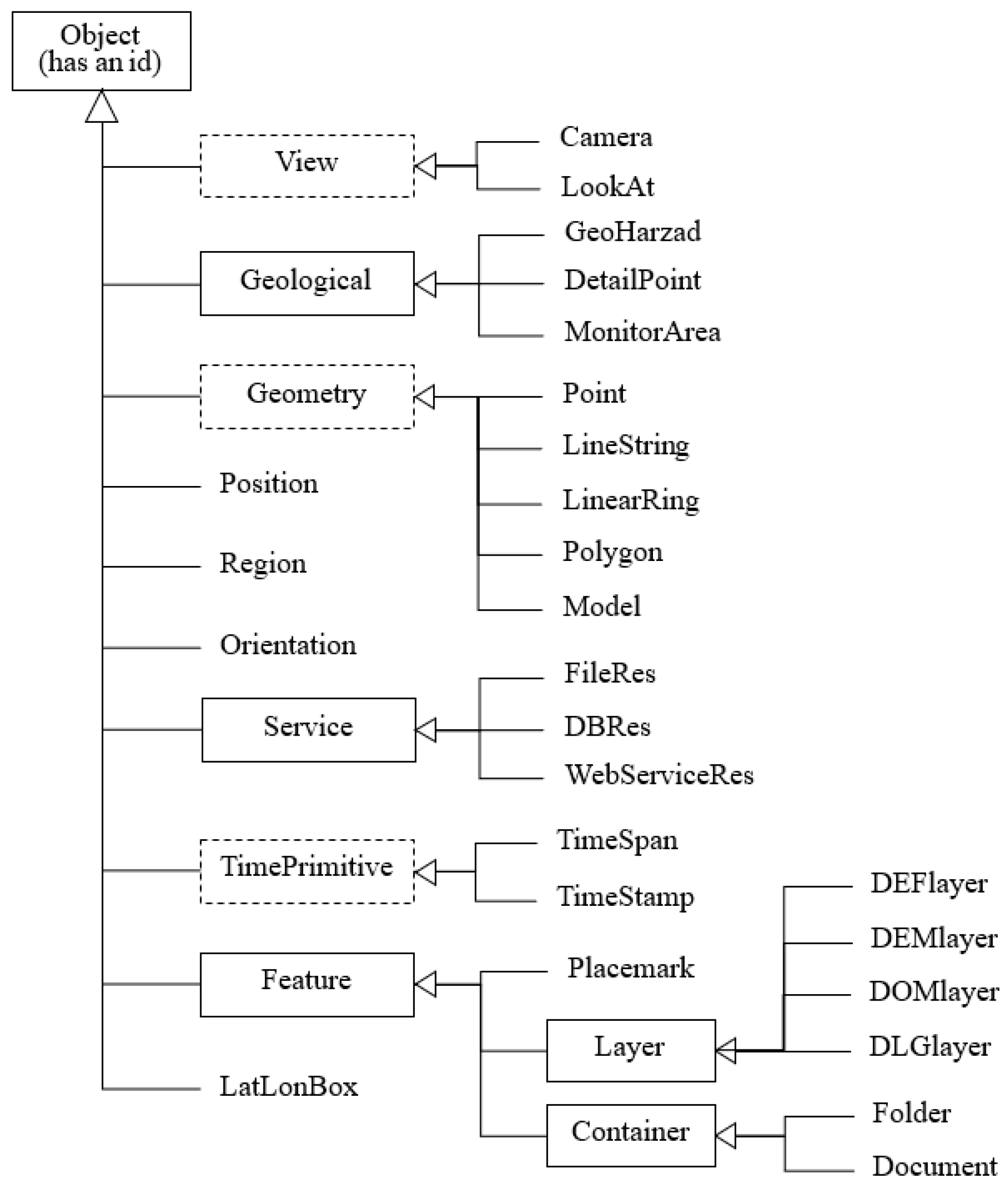

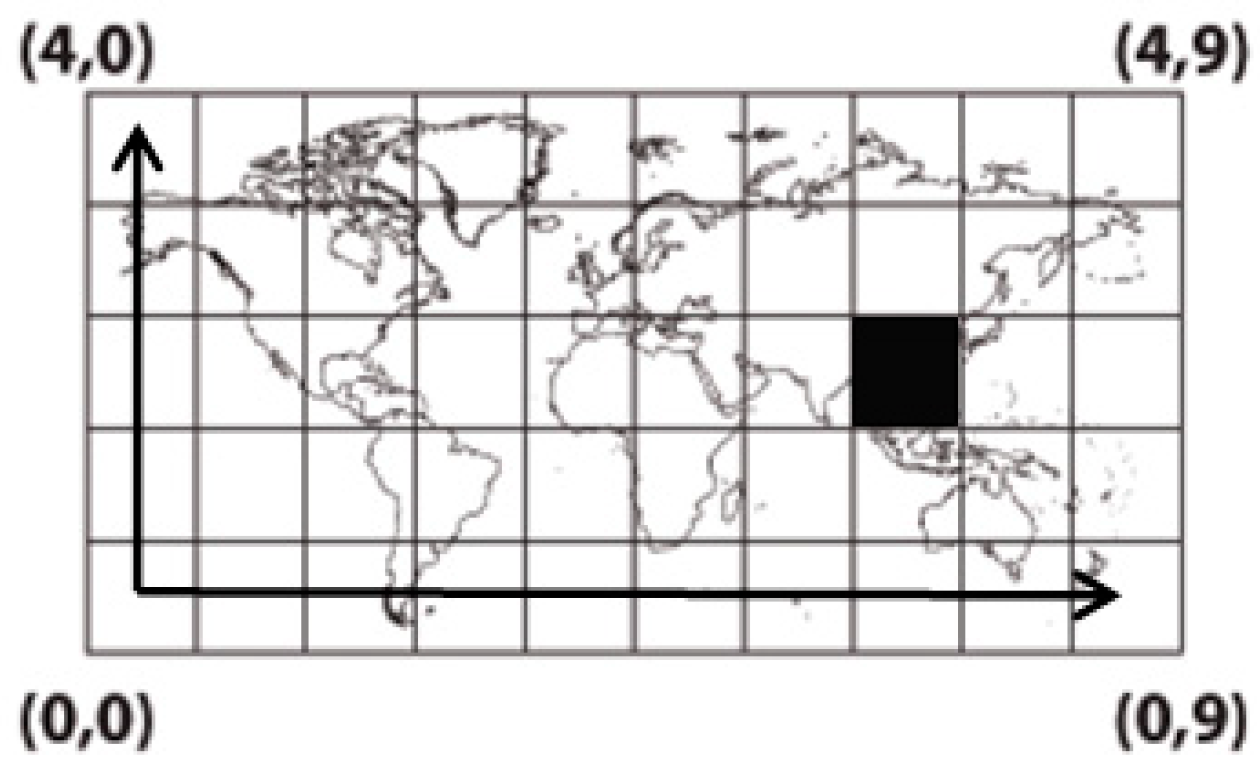
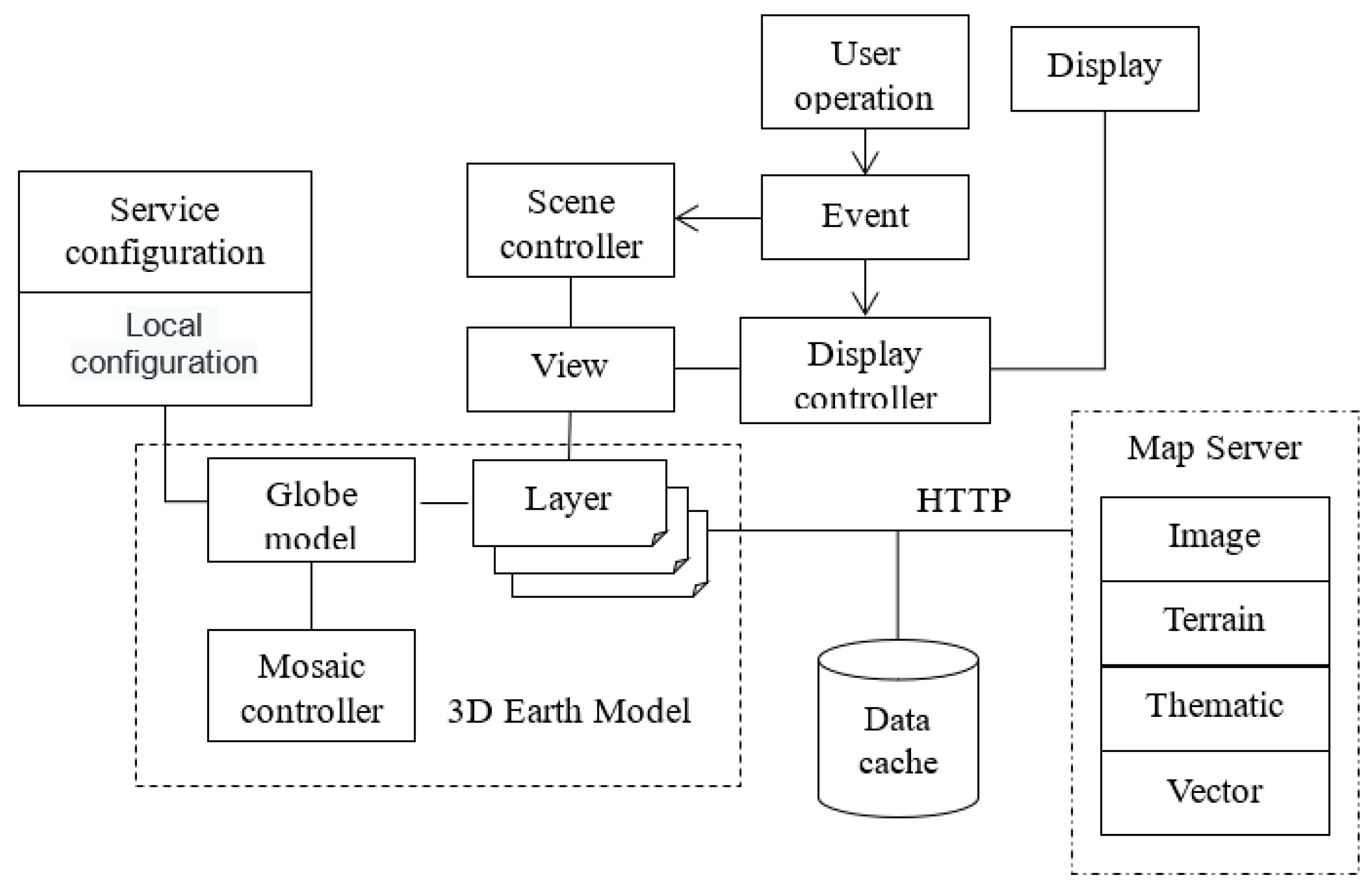



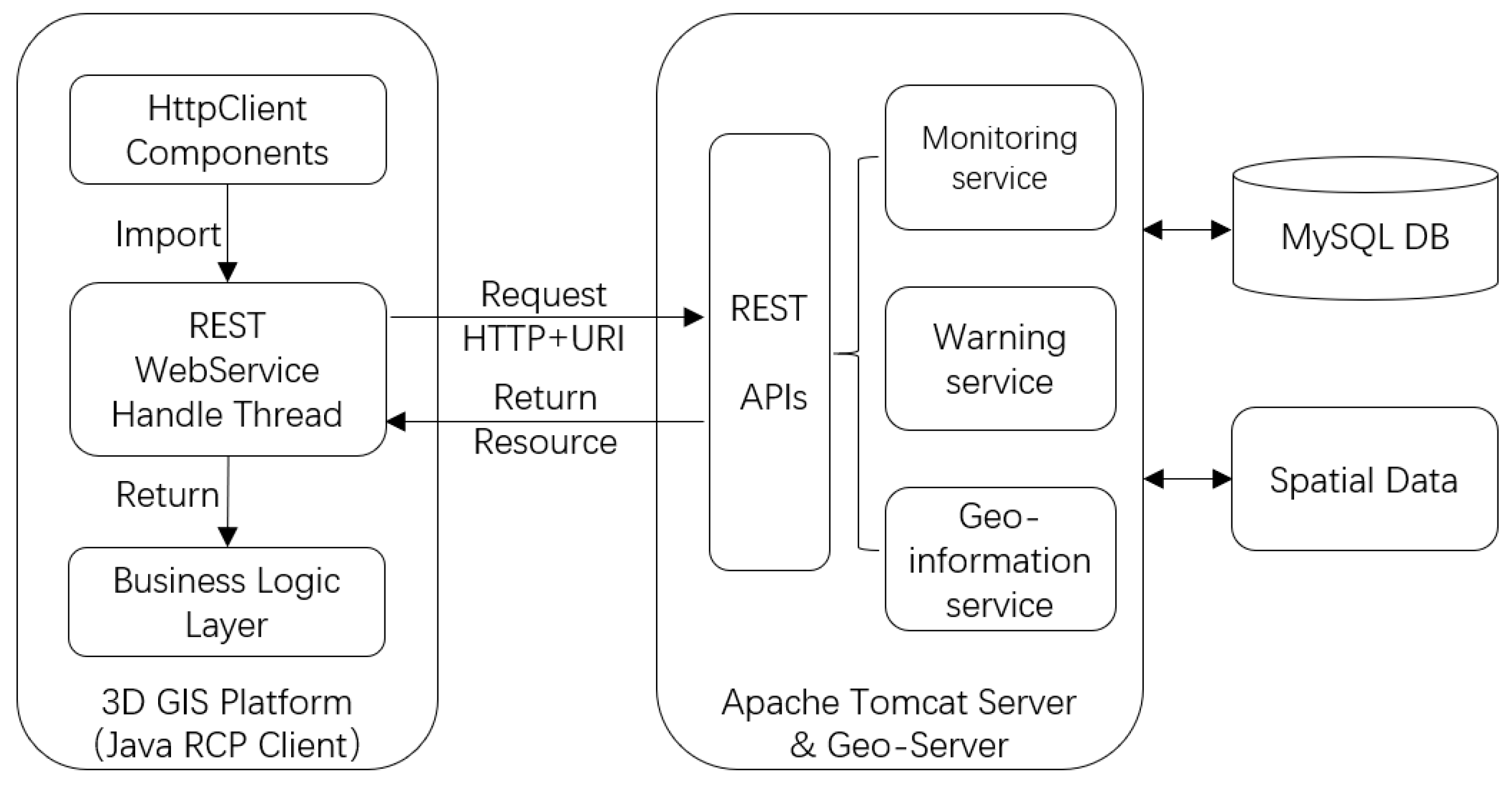

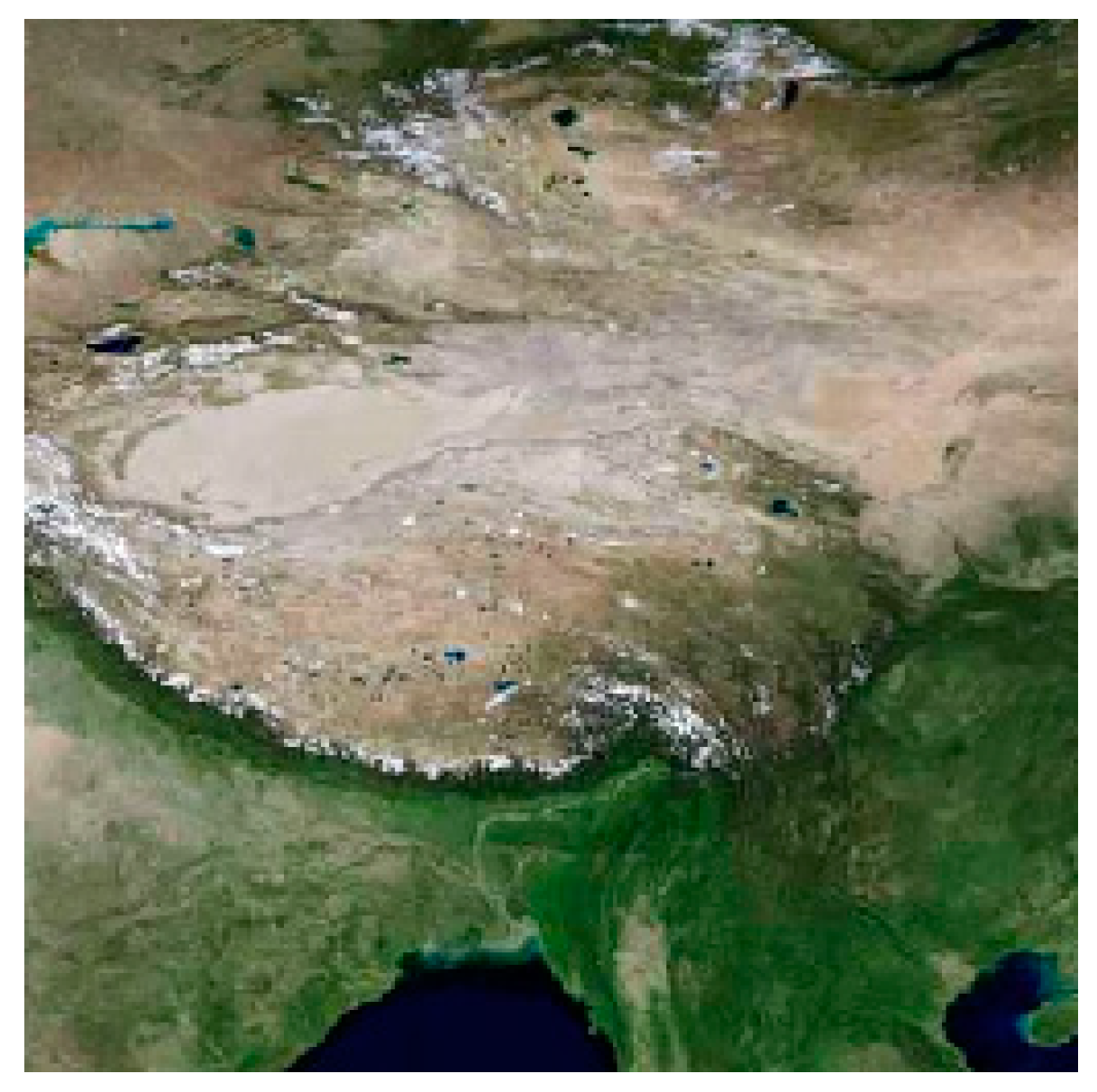


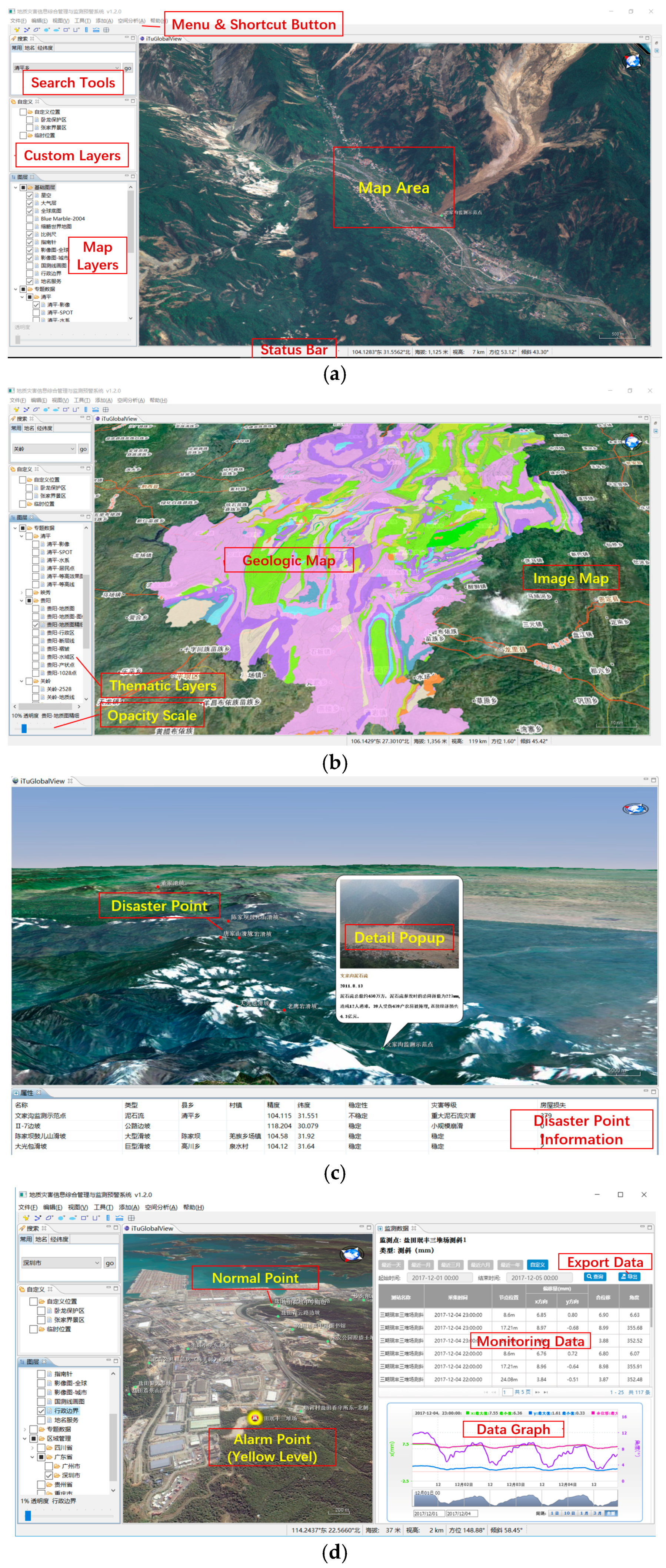
| Level | Degree | Tiles |
|---|---|---|
| Level 0 | 36 | 50 |
| Level 1 | 18 | 200 |
| Level 2 | 9 | 800 |
| ... | ... | ... |
| Level n | 36/2n | 50 × 4n |
| Monitoring Content | Monitoring Method |
|---|---|
| Surface deformation monitoring | Geodetic method |
| GPS method | |
| Ground surface crack observation | |
| Deep deformation monitoring | Deep tilt monitoring |
| Slip surface displacement monitoring | |
| Groundwater monitoring | Groundwater level |
| Soil moisture content | |
| Osmotic observation | |
| Weather monitoring | Rainfall monitoring |
| Field Name | Type | Description |
|---|---|---|
| Id | Int(32) | Warning information entry number |
| Warning_type | Char(1) | Timed or active triggering |
| Warning_level | Char(1) | Warning level 1–4 |
| Warning_time | Datetime | Warning message creation time |
| area_id | Int(32) | ID of corresponding monitoring point |
| isdisposed | Char(1) | Has it been processed? |
© 2018 by the authors. Licensee MDPI, Basel, Switzerland. This article is an open access article distributed under the terms and conditions of the Creative Commons Attribution (CC BY) license (http://creativecommons.org/licenses/by/4.0/).
Share and Cite
Leng, X.; Liu, D.; Luo, J.; Mei, Z. Research on a 3D Geological Disaster Monitoring Platform Based on REST Service. ISPRS Int. J. Geo-Inf. 2018, 7, 226. https://doi.org/10.3390/ijgi7060226
Leng X, Liu D, Luo J, Mei Z. Research on a 3D Geological Disaster Monitoring Platform Based on REST Service. ISPRS International Journal of Geo-Information. 2018; 7(6):226. https://doi.org/10.3390/ijgi7060226
Chicago/Turabian StyleLeng, Xiaopeng, Dunlong Liu, Junsong Luo, and Zhanyong Mei. 2018. "Research on a 3D Geological Disaster Monitoring Platform Based on REST Service" ISPRS International Journal of Geo-Information 7, no. 6: 226. https://doi.org/10.3390/ijgi7060226
APA StyleLeng, X., Liu, D., Luo, J., & Mei, Z. (2018). Research on a 3D Geological Disaster Monitoring Platform Based on REST Service. ISPRS International Journal of Geo-Information, 7(6), 226. https://doi.org/10.3390/ijgi7060226




